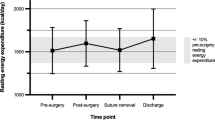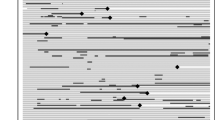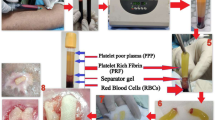Abstract
Study design: A case report.
Objectives: To demonstrate stimulating action of F XIII in wound healing of complicated pressure sores.
Setting: A Spinal Cord Injury Center in Germany.
Methods: Clinical exam, clinical and photographic wound control, biochemical serum monitoring.
Results: Recurrent pressure sores in plegic patients are common complications requiring long-standing conservative or operative therapy. Additional risk factors such as diabetes increase the complication rate for surgery. Surgery itself may be difficult in recurrent pressure sores due to limited remaining soft tissues. We report the case and treatment of a 47-year-old patient with long-standing and recurrent ulcers and complications after flap surgery. As a final option we added plasma transglutaminase (factor XIII) to our treatment scheme which changed the course of the disease dramatically and we achieved complete and rapid healing.
Conclusion: Our experience suggests that F XIII has a positive role in treating pressure sores as shown already in several other surgical fields. Its use is giving the surgeon an additional tool in complicated cases.
Spinal Cord (2001) 39, 114–117.
Similar content being viewed by others
Log in or create a free account to read this content
Gain free access to this article, as well as selected content from this journal and more on nature.com
or
References
Heppert V, Becker S, Winkler H, Wentzensen A . Myocutaneous versus fasciocutaneous free flap in the treatment of lower leg osteitis Eur J Orthop Surg Traumatol 1995 5: 27–31
Stauffer ES . Neurologic recovery following injuries to the cervical spinal cord and nerve roots Spine 1984 9: 532
Lüscher NJ . Epidemiologie von Dekubitalulzera In: Lüscher NJ, (ed). Dekubitalulzera der Beckenregion. Verlag Hans Huber, Bern: 1988 pp 11–18
Young JS, Burns PE, Bowen AM, McCuthen R . In: Spinal cord injury statistics Good samaritan medical center. Phoenix, Arizona 1982
Garibaldi RAS et al. Infections among patients in nursing homes New Engl J Med 1981 305: 731–735
Gerner HJ . In: Die Querschnittlähmung. Berlin, Blackwell Wiss: 1992 pp 119
Erlebach R, Hartung H-J . Einsatz von Faktor XIII bei Schwerstbrandverletzten In: Egring R, Seitz R, Wozniak G (eds). Klinische Aspekte des Faktor-XIII-Mangels, Diagnostik, klinische Relevanz, klinische Forschung. Karger: Basel 1999 pp 89–92
Mishima Y et al. Faktor XIII in der Behandlung postoperativer therapierefraktärer Wundheilungsstörungen. Ergebnisse einer kontrollierten Studie Chirurg 1984 55: 803–808
Muto T et al. Postoperativer Faktor XIII Mangel und Wundheilungsstörungen Gelben Hefte 1977 37: 83–87
Brockmeier SJ, Arnold W . Erfahrungen mit Faktor XIII bei Wundheilunhgsstörungen von Patienten mit Kopf-Hals-Tumoren In: Ebring R, Seitz R, Wozniak G (eds). Klinische Aspekte des Faktor-XIII-Mangels, Diagnostik, klinische Relevanz, klinische Forschung. Karger: Basel 1999 pp 147–154
Davids H, Hodel D . Faktor XIII Einsatz bei Wundheilungsstörungen nach ausgedehnten Tumorresektionen im Kopf-Hals-Bereich In: Ebring R, Seitz R, Wozniak G (eds). Klinische Aspekte des Faktor-XIII-Mangels, Diagnostik, klinische Relevanz, klinische Forschung. Karger: Basel 1999 pp 155–157
Brown L et al. Fibroblast migration in fibrin gel matrices AJP January 1993 142: No. 1 273–283
Baer U, Bauknecht J, Stangl Th, Häring R . Verminderung von Wundheilungsstörungen durch prä- und postoperative quantitative Faktor XIII Substitution Zbl. Chirurgie 1980 105: 642–651
Gierhake FW et al. Prophylaxe postoperativer Wundheilungsstörungen durch Faktor XIII Substitution Dtsch. Med. Wschr 1974 99: 1004–1009
Beck E, Duckert F, Ernst M . The influence if fibrin stabilizing factors on the growth of fibroblast in vitro and wound healing Thrombosis et diathesis haemorrhagica 1961 Vl: 3
Payé M, Lapière M . Wundheilung: Der Beitrag des Gerinnungsfaktors XIII Die gelben Hefte 1986 XXVI
Ueki S, Takagi J, Saito Y . Dual functions of transglutaminase in novel cell adhesion ICS 1996 109: 2727–2735
Noll T et al. Effect of factor XIII on endothelial barrier function J Exp Med 1999 189: 1373–1382
Author information
Authors and Affiliations
Rights and permissions
About this article
Cite this article
Becker, S., Weidt, F. & Röhl, K. The role of plasma transglutaminase (F XIII) in wound healing of complicated pressure sores after spinal cord injury. Spinal Cord 39, 114–117 (2001). https://doi.org/10.1038/sj.sc.3101092
Published:
Issue date:
DOI: https://doi.org/10.1038/sj.sc.3101092
Keywords
This article is cited by
-
The impact of acquired coagulation factor XIII deficiency in traumatic bleeding and wound healing
Critical Care (2022)
-
Osteopromotion with a plasmatransglutaminase on a β-TCP ceramic
Journal of Materials Science: Materials in Medicine (2008)



